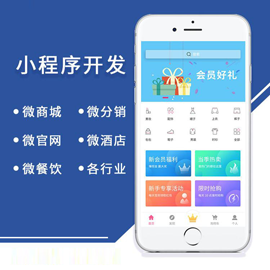UIKit框架(21)UITableView實現(xiàn)復(fù)雜單元格(一)-創(chuàng)新互聯(lián)
上篇文章介紹了UITableView的數(shù)據(jù)源驅(qū)動、重用機制、刷新數(shù)據(jù)等基本用法

本篇文章介紹如何實現(xiàn)一些復(fù)雜的單元格
UITableViewCell單元格對象有四種基本樣式,開發(fā)中這個基本樣式往往不能滿足我們的需求,也就是說需要自定義UITableViewCell的樣式,介紹主要的兩種做法:
1)使用純代碼自定義
2)使用storyboard中的prototype cell
先來介紹一下UITableViewCell
UITableViewCell表格單元格
UITableView中的單元格使用UITableViewCell視圖對象
創(chuàng)建方法:
- (instancetype)initWithStyle:(UITableViewCellStyle)style reuseIdentifier:(NSString *)reuseIdentifier
style參數(shù):cell的預(yù)設(shè)樣式
typedef enum : NSInteger {
UITableViewCellStyleDefault,
UITableViewCellStyleValue1,
UITableViewCellStyleValue2,
UITableViewCellStyleSubtitle
} UITableViewCellStyle;reuseIdentifier參數(shù):cell的重用ID
單元格的內(nèi)部視圖:
@property(nonatomic, readonly, retain) UIView *contentView
內(nèi)部視圖中又包含以下三個子視圖,這三個子視圖在不同樣式中顯示的個數(shù)及樣式不同
@property(nonatomic, readonly, retain) UILabel *textLabel @property(nonatomic, readonly, retain) UILabel *detailTextLabel @property(nonatomic, readonly, retain) UIImageView *p_w_picpathView
單元格的其他組件:
@property(nonatomic) UITableViewCellAccessoryType accessoryType //右側(cè)指示視圖樣式 @property(nonatomic, retain) UIView *accessoryView //自定義右側(cè)指示視圖
單元格的選擇狀態(tài):
@property(nonatomic, getter=isSelected) BOOL selected @property(nonatomic) UITableViewCellSelectionStyle selectionStyle
復(fù)雜單元格實現(xiàn)(一): 純代碼自定義
實現(xiàn)如下效果:
 實現(xiàn)一個游戲人物信息的展示
實現(xiàn)一個游戲人物信息的展示
分析:
UITableView使用典型的MVC設(shè)計模式進行開發(fā)
a. 模型:游戲英雄信息數(shù)據(jù)
b. 視圖:單元格視圖UITableViewCell的子類
c. 控制器:管理模型數(shù)組,以及實現(xiàn)tableView的數(shù)據(jù)源、代理等
1)模型定義
@interface AMHeroModel : NSObject @property (nonatomic, copy) NSString * name; //英雄名 @property (nonatomic, copy) NSString * title; //英雄稱號 @property (nonatomic, copy) NSString * icon; //英雄圖標 @property (nonatomic, copy) NSString * desc; //英雄描述 @property (nonatomic, copy) NSString * tags; //英雄標簽 + (AMHeroModel*) modelWithDict:(NSDictionary*)dict;//構(gòu)造方法:字典轉(zhuǎn)模型 @end
2)控制器管理模型數(shù)組并使用懶加載
@interface ViewController () @property (nonatomic, strong) NSMutableArray * heroArray;//模型數(shù)組 @property (weak, nonatomic) IBOutlet UITableView *tableView;//tableView @end
#pragma mark - heroArray懶加載
- (NSMutableArray *)heroArray
{
if ( _heroArray == nil ) {
NSString * plistPath = [[NSBundle mainBundle] pathForResource:@"hero.plist" ofType:nil];
NSArray * plistArray = [NSArray arrayWithContentsOfFile:plistPath];
_heroArray = [NSMutableArray array];
for ( NSDictionary * dict in plistArray ) {
AMHeroModel * model = [AMHeroModel modelWithDict:dict];
[_heroArray addObject:model];
}
}
return _heroArray;
}3)自定義UITableViewCell子類
需要展示的模型數(shù)據(jù)包括:4個字符串、一張圖片,故UITableViewCell內(nèi)部應(yīng)自定義4個UILabel以及一個UIImageView子視圖。
實現(xiàn)需要三步:
@interface AMHeroCell : UITableViewCell //1.添加一個類方法,獲取cell + (AMHeroCell *) cellWithTableView:(UITableView * ) tableView; //2.添加模型屬性并重寫setter方法 @property (nonatomic, strong) AMHeroModel * heroModel; //3.提供一個類方法,返回cell的高度 + (CGFloat) cellHeight; @end
4)UITableViewCell子類:添加一個類方法獲取cell
這一步是自定義UITableViewCell最關(guān)鍵且最復(fù)雜的步驟,需要完成:
將cell創(chuàng)建/獲取的代碼封裝、創(chuàng)建所有的子視圖、設(shè)置所有的子視圖的frame
//1.1 實現(xiàn)類方法,獲取cell
+ (AMHeroCell *)cellWithTableView:(UITableView *)tableView
{
AMHeroCell * cell = [tableView dequeueReusableCellWithIdentifier:@"cell"];
if ( cell == nil ) {
cell = [[AMHeroCell alloc] initWithStyle:UITableViewCellStyleDefault reuseIdentifier:@"cell"];
}
return cell;
}創(chuàng)建所有的子視圖操作應(yīng)當放在initWithStyle方法中,故重寫
//1.2 重寫initWithStyle:方法,添加自定義子視圖的代碼
- (instancetype)initWithStyle:(UITableViewCellStyle)style reuseIdentifier:(NSString *)reuseIdentifier
{
if ( self = [super initWithStyle:style reuseIdentifier:reuseIdentifier] ) {
//1.2.1 將沒有用的子視圖刪除
[self.p_w_picpathView removeFromSuperview];
[self.textLabel removeFromSuperview];
[self.detailTextLabel removeFromSuperview];
//1.2.2 創(chuàng)建自定義的子視圖并進行一次性的屬性設(shè)置
UIImageView * iconImageView = [[UIImageView alloc] init];
self.iconImageView =iconImageView;
[self.contentView addSubview:self.iconImageView];
UILabel * nameLabel = [[UILabel alloc] init];
self.nameLabel = nameLabel;
[self.contentView addSubview:self.nameLabel];
self.nameLabel.textColor = [UIColor purpleColor];
self.nameLabel.font = [UIFont systemFontOfSize:16];
UILabel * titleLabel = [[UILabel alloc] init];
self.titleLabel = titleLabel;
[self.contentView addSubview:self.titleLabel];
self.titleLabel.textColor = [UIColor grayColor];
self.titleLabel.font = [UIFont systemFontOfSize:14];
UILabel * tagsLabel = [[UILabel alloc] init];
self.tagsLabel = tagsLabel;
[self.contentView addSubview:tagsLabel];
self.tagsLabel.textColor = [UIColor redColor];
self.tagsLabel.font = [UIFont systemFontOfSize:12];
UILabel * descLabel = [[UILabel alloc] init];
self.descLabel = descLabel;
[self.contentView addSubview:descLabel];
self.descLabel.textColor = [UIColor blueColor];
self.descLabel.font = [UIFont systemFontOfSize:12];
self.descLabel.numberOfLines = 0;
}
return self;
}考慮到屏幕適配,使用設(shè)定frame的方式且當前為view子類,所以重寫layoutSubviews方法
//1.3 設(shè)置所有子視圖的frame或者使用autolayout
//如果使用autolayout,代碼放在重寫的initWithStyle方法中
//如果使用frame,放在layoutSubviews方法中
- (void)layoutSubviews
{
[super layoutSubviews];
CGFloat Xspace = self.contentView.frame.size.width*0.05;
CGFloat Yspace = self.contentView.frame.size.height*0.05;
CGFloat iX, iY, iW, iH;
iX = Xspace;
iY = Yspace;
iH = self.contentView.frame.size.height*0.9;
iW = iH;
self.iconImageView.frame = CGRectMake(iX, iY, iW, iH);
CGFloat nX, nY, nW, nH;
nX = 2*Xspace+iW;
nY = iY;
nW = (self.contentView.frame.size.width-3*Xspace-iW-Xspace)/2;
nH = self.contentView.frame.size.height*0.2;
self.nameLabel.frame = CGRectMake(nX, nY, nW, nH);
CGFloat tX, tY, tW, tH;
tX = CGRectGetMaxX(self.nameLabel.frame)+Xspace;
tY = nY;
tW = nW;
tH = nH;
self.titleLabel.frame = CGRectMake(tX, tY, tW, tH);
CGFloat taX, taY, taW, taH;
taX = nX;
taY = self.contentView.frame.size.height*0.3;
taW = self.contentView.frame.size.width- 3*Xspace -iW;
taH = nH;
self.tagsLabel.frame = CGRectMake(taX, taY, taW, taH);
CGFloat dX, dY, dW, dH;
dX = nX;
dY = self.contentView.frame.size.height*0.55;
dW = taW;
dH = self.contentView.frame.size.height*0.4;
self.descLabel.frame = CGRectMake(dX, dY, dW, dH);
}5)UITableViewCell子類:添加模型屬性并重寫setter方法
在3)中的代碼示例中已經(jīng)看到添加了模型屬性
重寫setter方法的目的是:對外隱藏子視圖,數(shù)據(jù)顯示到子視圖的操作封裝在setter方法內(nèi)部
- (void)setHeroModel:(AMHeroModel *)heroModel
{
_heroModel = heroModel;
//圖片對象的創(chuàng)建:兩種方式:
//1)p_w_picpathNamed 有緩存的圖片對象創(chuàng)建方式 以空間換時間
//self.iconImageView.p_w_picpath = [UIImage p_w_picpathNamed:_heroModel.icon];
//2)withContentOfFile方式創(chuàng)建的 不使用緩存 以時間換空間
NSString * path = [[NSBundle mainBundle] pathForResource:_heroModel.icon ofType:nil];
self.iconImageView.p_w_picpath = [[UIImage alloc] initWithContentsOfFile:path];
self.nameLabel.text = _heroModel.name;
self.titleLabel.text = _heroModel.title;
self.tagsLabel.text = _heroModel.tags;
self.descLabel.text = _heroModel.desc;
}6)UITableViewCell子類:類方法返回cell的高度
UITableView中單元格的高度,默認是44,添加一個類方法返回指定的高度,這樣做的好處是:當需求有變時,只需要修改UITableViewCell的子類,即高內(nèi)聚低耦合的編程思想。
+ (CGFloat)cellHeight
{
return 140.f;
}7)控制器實現(xiàn)tableView的數(shù)據(jù)源、代理方法
#pragma mark - tableView的數(shù)據(jù)源和代理
- (NSInteger)numberOfSectionsInTableView:(UITableView *)tableView
{
return 1;
}
- (NSInteger)tableView:(UITableView *)tableView numberOfRowsInSection:(NSInteger)section
{
return self.heroArray.count;
}
- (UITableViewCell *)tableView:(UITableView *)tableView cellForRowAtIndexPath:(NSIndexPath *)indexPath
{
return [AMHeroCell cellWithTableView:tableView];
}
- (void)tableView:(UITableView *)tableView willDisplayCell:(UITableViewCell *)cell forRowAtIndexPath:(NSIndexPath *)indexPath
{
AMHeroCell * heroCell = cell;
heroCell.heroModel = self.heroArray[indexPath.row];
}
- (CGFloat)tableView:(UITableView *)tableView heightForRowAtIndexPath:(NSIndexPath *)indexPath
{
return [AMHeroCell cellHeight];
}可以看到數(shù)據(jù)源、代理方法的實現(xiàn)極其簡單,且無論模型數(shù)據(jù)怎么變,cell怎么變,這部分的代碼是幾乎不變的
案例的額外功能擴展
1)添加功能
從截圖可以看到,導(dǎo)航欄有一個加號按鈕,實現(xiàn)響應(yīng)方法:隨機添加一個英雄
#pragma mark - 添加cell
- (void) addBarBtnClicked
{
NSInteger index = random()%self.heroArray.count;
AMHeroModel * model = self.heroArray[index];
[self.heroArray insertObject:model atIndex:0];
[self.tableView reloadData];
}2)刪除功能
從截圖可以看到,導(dǎo)航欄有一個刪除按鈕,點擊后UITableView進入編輯狀態(tài)
#pragma mark - 刪除cell
- (void) delBarBtnClicked
{
[self.tableView setEditing:!self.tableView.isEditing animated:YES];
} 
點擊編輯狀態(tài)的刪除按鈕的響應(yīng)方法
- (void)tableView:(UITableView *)tableView commitEditingStyle:(UITableViewCellEditingStyle)editingStyle forRowAtIndexPath:(NSIndexPath *)indexPath
{//當進入編輯狀態(tài)后,點擊delete按鈕時按鈕
[self.heroArray removeObjectAtIndex:indexPath.row];
[self.tableView reloadData];
}3)點擊一個cell,彈出一個UIAlertController,可以進行簡單的數(shù)據(jù)修改
- (void)tableView:(UITableView *)tableView didSelectRowAtIndexPath:(NSIndexPath *)indexPath
{
UIAlertController * ac = [UIAlertController alertControllerWithTitle:@"修改英雄信息" message:@"輸入修改該的數(shù)據(jù)" preferredStyle:UIAlertControllerStyleAlert];
UIAlertAction * a1 = [UIAlertAction actionWithTitle:@"取消" style:UIAlertActionStyleCancel handler:^(UIAlertAction * _Nonnull action) {
}];
UIAlertAction * a2 = [UIAlertAction actionWithTitle:@"確定" style:UIAlertActionStyleDefault handler:^(UIAlertAction * _Nonnull action) {
model.name = ac.textFields[0].text;
model.title = ac.textFields[1].text;
[self.tableView reloadData];//重新加載數(shù)據(jù)
}];
[ac addAction:a1];
[ac addAction:a2];
[ac addTextFieldWithConfigurationHandler:^(UITextField * _Nonnull textField) {
textField.text = model.name;
}];
[ac addTextFieldWithConfigurationHandler:^(UITextField * _Nonnull textField) {
textField.text = model.title;
}];
[self presentViewController:ac animated:YES completion:nil];
}效果:

另外有需要云服務(wù)器可以了解下創(chuàng)新互聯(lián)scvps.cn,海內(nèi)外云服務(wù)器15元起步,三天無理由+7*72小時售后在線,公司持有idc許可證,提供“云服務(wù)器、裸金屬服務(wù)器、高防服務(wù)器、香港服務(wù)器、美國服務(wù)器、虛擬主機、免備案服務(wù)器”等云主機租用服務(wù)以及企業(yè)上云的綜合解決方案,具有“安全穩(wěn)定、簡單易用、服務(wù)可用性高、性價比高”等特點與優(yōu)勢,專為企業(yè)上云打造定制,能夠滿足用戶豐富、多元化的應(yīng)用場景需求。
網(wǎng)頁題目:UIKit框架(21)UITableView實現(xiàn)復(fù)雜單元格(一)-創(chuàng)新互聯(lián)
標題路徑:http://chinadenli.net/article6/egiig.html
成都網(wǎng)站建設(shè)公司_創(chuàng)新互聯(lián),為您提供移動網(wǎng)站建設(shè)、網(wǎng)站改版、關(guān)鍵詞優(yōu)化、品牌網(wǎng)站設(shè)計、軟件開發(fā)、域名注冊
聲明:本網(wǎng)站發(fā)布的內(nèi)容(圖片、視頻和文字)以用戶投稿、用戶轉(zhuǎn)載內(nèi)容為主,如果涉及侵權(quán)請盡快告知,我們將會在第一時間刪除。文章觀點不代表本網(wǎng)站立場,如需處理請聯(lián)系客服。電話:028-86922220;郵箱:631063699@qq.com。內(nèi)容未經(jīng)允許不得轉(zhuǎn)載,或轉(zhuǎn)載時需注明來源: 創(chuàng)新互聯(lián)
猜你還喜歡下面的內(nèi)容
- 為什么盡量別用setInterval-創(chuàng)新互聯(lián)
- 基于Idea+Jconsole實現(xiàn)線程監(jiān)控的方法-創(chuàng)新互聯(lián)
- 前端開發(fā)學(xué)習(xí)系列之一:準備工作-創(chuàng)新互聯(lián)
- 怎么在C語言中使用正則表達式-創(chuàng)新互聯(lián)
- CTF--PWN必備技能--理解c程序從編譯開始到運行結(jié)束的過程-創(chuàng)新互聯(lián)
- 計算機病毒有哪幾類-創(chuàng)新互聯(lián)
- PostgreSQL的pg_promote有什么作用-創(chuàng)新互聯(lián)

- ChatGPT的發(fā)展歷程 2023-02-20
- ChatGPT的應(yīng)用ChatGPT對社會的利弊影響 2023-02-20
- 怎樣利用chatGPT快速賺錢? 2023-05-05
- 爆紅的ChatGPT,誰會丟掉飯碗? 2023-02-20
- ChatGPT是什么?ChatGPT是聊天機器人嗎? 2023-05-05
- 馬云回國,首談ChatGPT。又是新一個風(fēng)口? 2023-05-28
- ChatGPT是什么 2023-02-20
- 火爆的ChatGPT,來聊聊它的熱門話題 2023-02-20